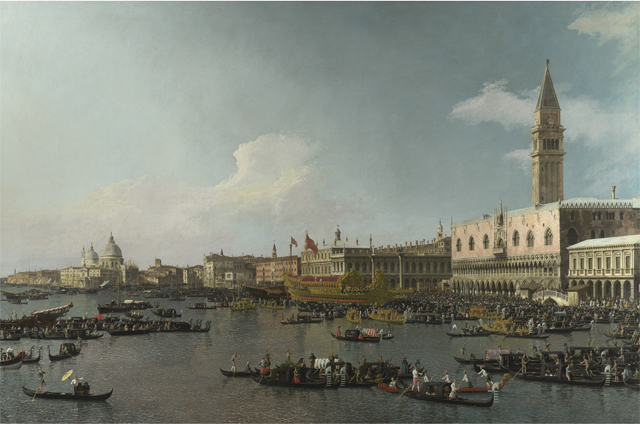My Favourite Painting: Harry Cotterell


Venice: The Basin of San Marco on Ascension Day, 1740, by Giovanni Antonio Canal, called Canaletto (1697–1768), 48in by 72in, The National Gallery, London
Harry Cotterell says: 'I have always loved Canaletto, mainly because of his architectural precision and vivid colours. Venice is the most beautiful city in the world and Santa Maria della Salute is my favourite church, in the finest position in Venice. The view in this painting is most people’s first vista of Venice, coming in from the airport, heading towards the Grand Canal, and everybody who has ever been to Venice remembers their first sight of it.'
Harry Cotterell is President of the CLA, whose Game Fair is this weekend at Ragley Hall, Warwickshire (July 19–21)
John McEwen comments: 'How apposite that the most famous painter of Venetian views should be called Canal—or rather, ‘little Canal’, in deference to his father, a renowned painter of stage sets for the opera. It was an Irishman, Owen McSwiney and an Englishman, Joseph Smith, to whom Canaletto was indebted for becoming the Republic’s supreme supplier of Venetian views for the Grand Tourist trade. McSwiney instigated, Smith capitalised, to the exclusion of all rivals; eventually, he was appointed his Britannic Majesty’s Consul.
This painting, one of a pair, was presented to the National Gallery by Lord Revelstoke in 1929. It shows the annual ceremony of Venice’s Sea Wedding, Sposalizio del Mar. The ceremony dated from ad1000, when the Venetian fleet subjugated the Slav pirates of the Dalmatian coast. The fleet had weighed anchor on Ascension Day. Ever after, a flotilla, led by the Doge and dignitaries in the State Barge (Bucintoro), proceeded on the feast day to the open sea and consigned a propitiatory golden wedding ring to the deep.
Canaletto shows the ceremony when Alvise Pisani was Doge (1735–41). His arms are displayed on the barge and the men on the cabin roof also wear the Pisani colours, white and blue. The year 1741 marked the outbreak of the Austrian War of Succession and a consequent sea change in Canaletto’s career. His English clientele disappeared. In May 1746, he arrived in London to reignite his career.'
This article was first published in Country Life, July 17, 2013
Exquisite houses, the beauty of Nature, and how to get the most from your life, straight to your inbox.
Country Life is unlike any other magazine: the only glossy weekly on the newsstand and the only magazine that has been guest-edited by His Majesty The King not once, but twice. It is a celebration of modern rural life and all its diverse joys and pleasures — that was first published in Queen Victoria's Diamond Jubilee year. Our eclectic mixture of witty and informative content — from the most up-to-date property news and commentary and a coveted glimpse inside some of the UK's best houses and gardens, to gardening, the arts and interior design, written by experts in their field — still cannot be found in print or online, anywhere else.
